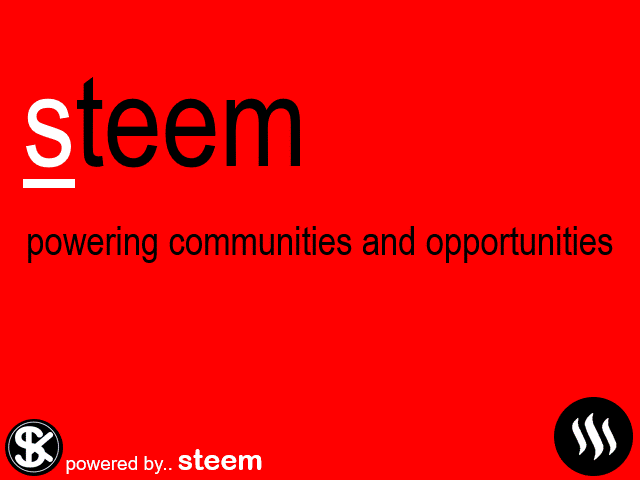Now that we may have the ability to invest in DeFi on the Tron blockchain I think it’s good to discus the impact of blockchain transaction speed on the safety of your investment, along with its impact on transaction fees.
:(
It was in March, 2020 that the price of Bitcoin suffered a record breaking one day drop of nearly 50%. And due to what’s called Bitcoin Dominance this caused the price of many, but not all Altcoins to also drop, some plummeted. (Altcoins being every cryptocurrency that’s not Bitcoin). For the purposes of this post, we are concerned with the price of Ethereum, which dropped 60% in one day.
Collateralization Ratio Loan Default
This sudden drop in its value triggered what I call a Collateralization Ratio Loan default, resulting in the ”Liquidation Sale” of the CDP loan wrapped Ethereum held in many investors ”Vaults” on the DeFi application MakerDao on the Ethereum blockchain.
So in brief, your CDP or collateralized debt products, is a loan, secured by an asset called Ethereum. So if you borrow against the value for example 50% of the value of the asset, you pledge the asset as security for the loan, giving the bank the right to sell it and get the money it loaned you back, if you stop paying the loan payments, that’s called default.
However if the value of an asset is volatile, defined as the price frequently goes up and down by wide margins, then there is another parameter giving the bank the right to sell the asset you pledged as security for the loan, called a loan to value ratio, but which in DeFi this loan to value ratio is called a Collateralization ratio.
So in brief the Collateralization ratio is the relationship between the value of the asset backing or securing the loan, as defined by its market price, to the amount the loan granted to the investor.
As you can see the value of the loan is fixed, but the value of the asset, because it’s price is volatile, is not fixed, so this ratio is not fixed.
So a loan with a good Collateralization ratio when the asset Ethereum is worth $200 will have a different ratio when the asset is worth $100.
And asset to loan ratio changes, or as it’s called in DeFi “Collateralization ratio” changes can trigger a loan default and your assets can be liquidated or sold.
So the Bitcoin price drop triggered an Ethereum price drop and the Ethereum price drop triggered the CDP loan defaults and investors Ethereum locked in these smart contracts was sold to insure the banks, called credit debt facilities in DeFi got their loan proceeds or money back.
The details are a little complicated, but that’s the big picture view. But It’s important to understand as an investor, that while these defaults were initiated by the price drops, investor attempts to remedy the situation were stopped or hampered by blockchain transaction speeds. Thats something you need to pay attention to here.
In many cases investors tried to deposit additional assets: Ethereum, to fix this temporary problem caused by the drop in the price of Ethereum. But because the Ethereum blockchain lacks surge capacity in terms of transactional volume. These investors were unable to deposit funds to fix the Collateralization issue. You see transactional speed determines transactional volume. If your speed is 100 transactions per minute, you can’t exceed that, so every transaction over 100 waits for the next minute. (Technically the next block) But if there are suddenly thousands or millions of transactions, you start to wait hours to complete your transaction. Some transactions won’t be completed until the next day.
However an additional factor is that, transactions on Ethereum aren’t free, and during busy times you pay more, you can pay higher transaction fees to move your transaction closer to the front of the line of waiting transactions. But even this system of paying more has its limits due to the math. No matter how much you pay, only 100 transactions per minute can be completed. Please remember that 100 is an example, not an actual number.
On Steem, we have fast, free transactions, so we don’t even think about this at all. But on Ethereum transactions are not as fast and they are not free. Ethereum is Proof of Work, you pay per transaction. Steem is proof of stake, your ownership of stake, in this case Steem pays for your transactions. Ethereum is an older blockchain with older blockchain transaction speed. Steem is a newer blockchain with faster speed.
The second way investors lost money due to lack of transaction speed and thus capacity.
The MakerDao also tries to protect investors in its CDP loan program, by selling their tokens in a secondary market. The CDP. Ethereum is sold in an auction. The goal is to obtain market price or better for these tokens. The Collateralization ratio defaults auction unfortunately involves BIDs and BIDs are TRANSACTIONS. So the bid process was hampered by the same problem with transaction speed and capacity that prevented the investors from depositing Ethereum to prevent the defaults.
The transactional slowdown is believed to have adversely affected the competitive bidding process by reducing the number of bids for CDP default accounts. It is believed that when very few bids or transactions got through and the high bids were very low and some were zero bids, the smart contracts sold Ethereum to the highest bidder of sometimes zero. These sales are recorded on the Ethereum blockchain.
Harsh Truths.
So forgive me for putting it bluntly and harshly, but investors tried to prevent these defaults, but the slow transaction speed issue on the blockchain prevented them from saving their investments. Additionally, the process for liquidating these CDP positions includes a secondary market which is designed to insure better prices at liquidation for the investor. But this failed in some instances also due to transaction speed issues.
So two possible safety valves built into the MakerDao failed due to lack of transaction speed or more accurately capacitance, but one determines the other. The failure of both contributed to the heavy losses suffered by investors.
If you want to stop reading now, you can leave with the important lesson slow transaction speeds increase investor losses.
So smart contracts aren’t so smart?
First, Ethereum is a wonderful creation, the third blockchain created, after Bitcoin and Litecoin. It was created to provide utility those two blockchains didn’t provide; smart contracts.
Smart contracts are the neutral middlemen in all the trustless transactions. Relatively simple goals, but complex execution of the famous if and then function, if party A wants to buy the house of party B for Ten Bitcoin. These two asset items are tokenized, as in represented by digital tokens, and these tokens represent ownership of two assets being exchanged. No middleman just software constructs, along with custodians of the items and oracles to validate their value.
The parties deliver the assets to the custodian, they are tokenized, those tokens are deposited, their value is validated by the oracle, the smart contract sees the terms are fulfilled and swaps the tokens, each person then redeems the tokens from the custodian who takes the tokens, destroys them and gives them each the asset the tokens represent. For one it’s ten Bitcoin, for the other it’s a summer house.
It a beautiful idea and when it works, it works beautifully. But like all human creations it can fail.
I know that to some of you this sounds terrible, and stupid and impossible. But you must remember smart contracts are neutral constructs that execute commands. They are called smart, but in reality, they aren’t capable of independent thought in their current configuration. See @kevinwong post at link below on Tau project for smart contracts which think. #tau Link below
But getting back to our current reality. Smart Contracts can be configured to react to market conditions, but unlike human minds their configurations are limited by code. The same things which makes us trust them, their faithful execution of code is the same reason we must monitor them, their faithful execution of code.
Selling Ethereum for zero sounds stupid to you, because your human. To computer code it’s is simply the execution of a command. Don’t under estimate humans and don’t over estimate code.
Also invest in projects whose code has been audited for glitches like this. Many DeFi programs are telling you they are ALPHA OR BETA These terms are Warnings, Alpha screams out to you “ potential unaudited code”. Ignore the caution sign at your peril.
Stay informed, and use fast free blockchains, Ha Ha Ha :)

Tau Project : See @kevinwong post on Tau project for smart contracts which think.











!shop
Downvoting a post can decrease pending rewards and make it less visible. Common reasons:
Submit
Thank you!
Downvoting a post can decrease pending rewards and make it less visible. Common reasons:
Submit
你好鸭,shortsegments!
@eii给您叫了一份外卖!
瓜叔代言西瓜

吃饱了吗?跟我猜拳吧! 石头,剪刀,布~
如果您对我的服务满意,请不要吝啬您的点赞~
Downvoting a post can decrease pending rewards and make it less visible. Common reasons:
Submit
Thanks!
Paper!
Downvoting a post can decrease pending rewards and make it less visible. Common reasons:
Submit
It’s a tie! 平局!再来!在猜拳界,我还没有输过!
Downvoting a post can decrease pending rewards and make it less visible. Common reasons:
Submit
Scissors
Downvoting a post can decrease pending rewards and make it less visible. Common reasons:
Submit
You lose! 你输了!不给我点赞,你就再吃我一拳~
Downvoting a post can decrease pending rewards and make it less visible. Common reasons:
Submit
Paper
Downvoting a post can decrease pending rewards and make it less visible. Common reasons:
Submit
You lose! 你输了!乖乖的给我点赞吧!
Downvoting a post can decrease pending rewards and make it less visible. Common reasons:
Submit
Scissors
Downvoting a post can decrease pending rewards and make it less visible. Common reasons:
Submit
Scissors
Downvoting a post can decrease pending rewards and make it less visible. Common reasons:
Submit
It’s a tie! 平局!想不到你也出鸡爪!
Downvoting a post can decrease pending rewards and make it less visible. Common reasons:
Submit